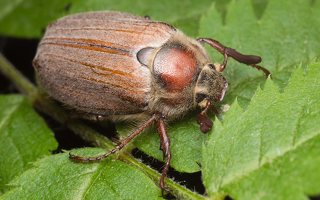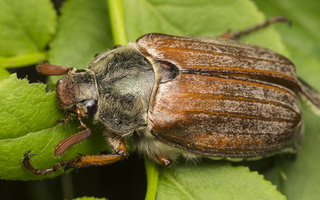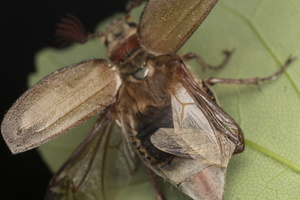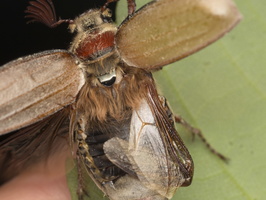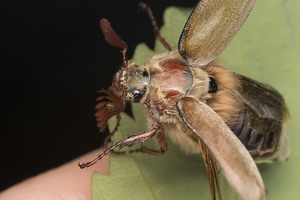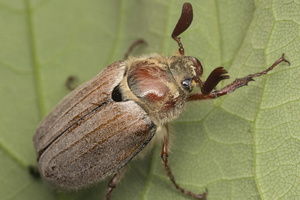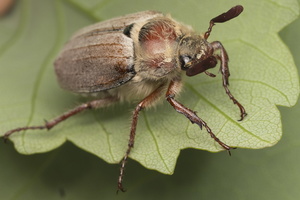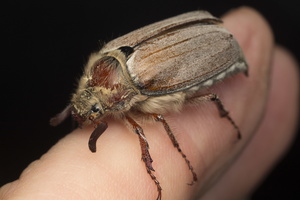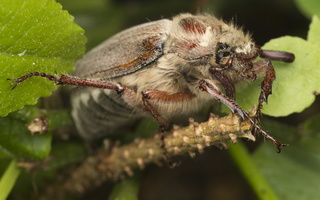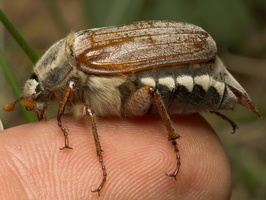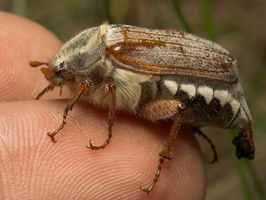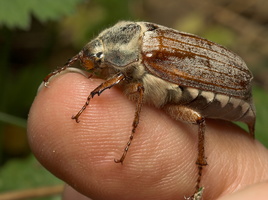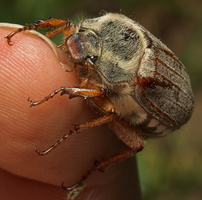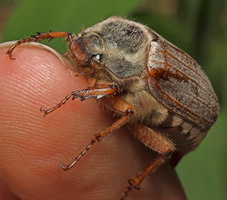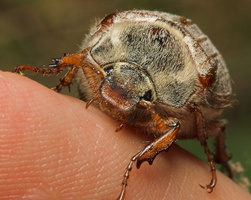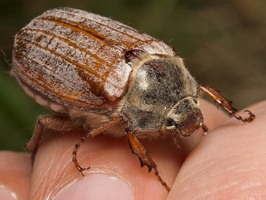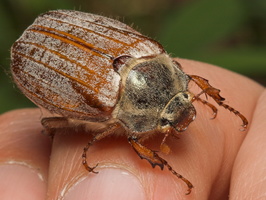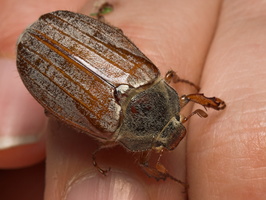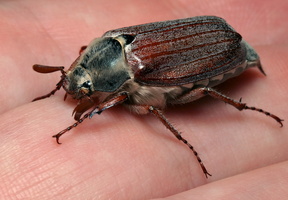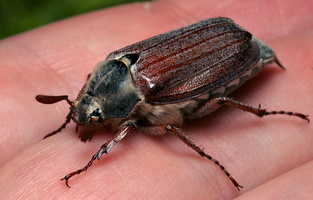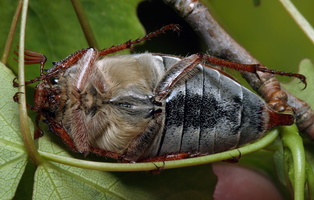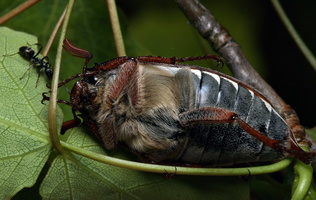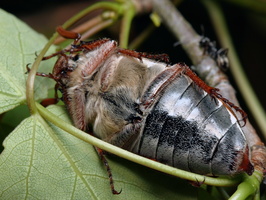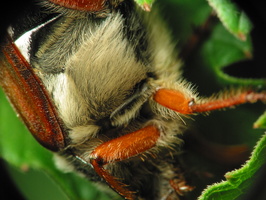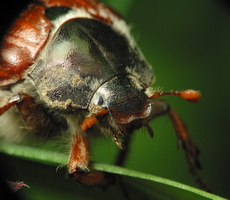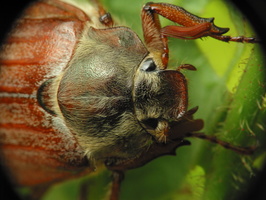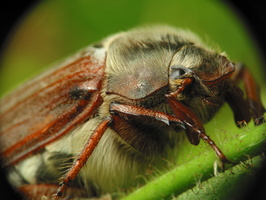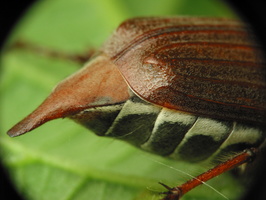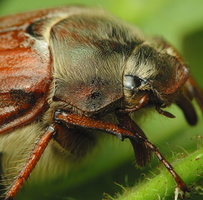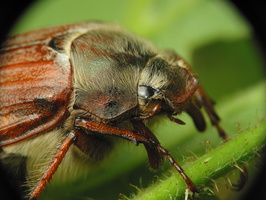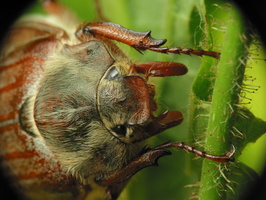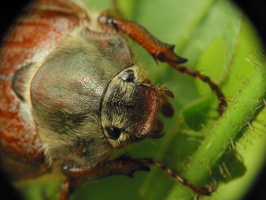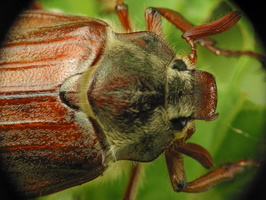- sort orderDefault
Photo title, A → Z
Photo title, Z → A
✔ Date created, new → old
Date created, old → new
Date posted, new → old
Date posted, old → new
Visits, high → low
Random
 home / Insecta · vabzdžiai / Coleoptera · vabalai / Scarabaeidae · skarabėjai / Melolontha melolontha · paprastasis grambuolys
home / Insecta · vabzdžiai / Coleoptera · vabalai / Scarabaeidae · skarabėjai / Melolontha melolontha · paprastasis grambuolys

Melolontha melolontha · paprastasis grambuolys
The larvae hatch towards the end of June and immediately begin to feed on small roots, at this time feeding and growth is rapid and they may move through 30cm of soil each day in search of food. With the onset of cold weather the larvae move deeper into the soil, between 20 and 100cm, where they cease feeding and overwinter. Second year larvae work their way up through the soil during April and May and resume feeding voraciously until the autumn when they will descend and overwinter for a second time. During their third year they continue feeding, often near the surface, until June or July when they will burrow deeper and pupate in an earthen cell, the adults are fully formed by August or September but remain buried until the following spring when they make their way to the surface and fly in search of suitable host foliage. The life-cycle takes about 36 months spread over 4 years in temperate regions but in cooler areas may require an extra season of larval development, again with pupation in the summer and adults emerging the following spring. In numbers the larvae can be extremely destructive in a wide range of crops such as potato tubers and root crops, various cereals and grasses generally, the roots of fruit trees may be stripped and grape vines may be completely destroyed over large areas.
